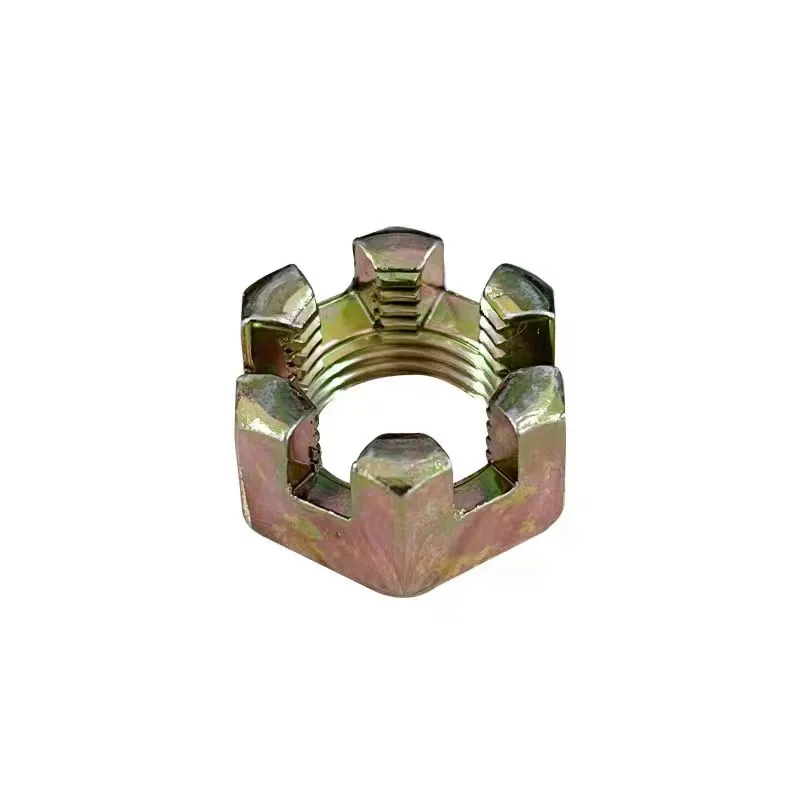

types of nut bolt
Nov . 04, 2024 00:51 Back to list
types of nut bolt
Understanding the Types of Nut and Bolt
In the world of fasteners, nuts and bolts are fundamental components that play a crucial role in various construction, machinery, and assembly applications. While they may seem simple in appearance, the variety of types, sizes, materials, and specifications they come in is vast, each designed to meet specific needs. This article will explore the different types of nuts and bolts, their uses, and their importance in various industries.
Bolts The Foundation of Fastening
A bolt is a type of fastener that includes a cylindrical shaft with threads along its length, designed to be used with a nut. The most common types of bolts include
1. Hex Bolts Characterized by their hexagonal heads, these bolts are commonly used in construction and machinery. They provide a strong grip and can be easily tightened using a wrench.
2. Carriage Bolts With a rounded head and a square neck, carriage bolts are designed to prevent rotation when tightened. They are frequently used in wood applications, such as furniture manufacturing.
3. Lag Bolts Also known as lag screws, these heavy-duty fasteners are used to join heavy materials like wood and metal. They have a larger diameter and a sharp point for easy penetration into harder materials.
4. Shoulder Bolts Featuring a shoulder or unthreaded section, shoulder bolts are used for applications requiring rotation or pivoting. They are commonly found in machinery and automotive applications.
5. Machine Bolts These are versatile and can be used for various applications, typically featuring a flat or round head. They are often employed in the assembly of machinery parts.
Nuts The Complements to Bolts
types of nut bolt

Nuts, on the other hand, serve as a counterpart to bolts, providing the clamping force needed to hold materials together. There are several types of nuts, including
1. Hex Nuts These are the most standard nut type, with a hexagonal shape that fits onto hex bolts. Their versatility makes them widely used in numerous applications.
2. Lock Nuts Designed to resist loosening, lock nuts have a special mechanism that keeps them secure under vibrations. These are especially important in automotive and aerospace applications.
3. Wing Nuts Featuring two wings on either side, these nuts can be easily tightened or loosened by hand, making them ideal for applications where frequent adjustments are needed.
4. Flange Nuts These nuts come with a built-in washer, which distributes the load over a larger area and helps prevent damage to the material being fastened. They are commonly used in automotive applications.
5. Cap Nuts These nuts have a closed end, providing a finished look and protecting the end of the bolt from the elements.
Choosing the Right Combination
Understanding the various types of nuts and bolts is vital for engineers, builders, and DIY enthusiasts alike. The right selection can ensure the longevity, safety, and effectiveness of a project. Factors to consider include the materials being joined, the environment (e.g., exposure to moisture or chemicals), and the load requirements.
In summary, nuts and bolts may be small in size, but they are enormous in significance across various industries. By familiarizing oneself with the types and functions of these fasteners, one can better appreciate their role in creating stable and reliable structures and machinery. Whether in construction, manufacturing, or household projects, the right nut and bolt combinations are essential for a successful outcome.
Latest news
-
High-Strength Hot-Dip Galvanized Bolts-Hebei Longze|Corrosion Resistance&High Strength
NewsJul.30,2025
-
Hot Dip Galvanized Bolts-Hebei Longze|Corrosion Resistance&High Strength
NewsJul.30,2025
-
Hot Dip Galvanized Bolts - Hebei Longze | Corrosion Resistance, High Strength
NewsJul.30,2025
-
High-Strength Hot Dip Galvanized Bolts-Hebei Longze|Corrosion Resistance, Grade 8.8
NewsJul.30,2025
-
Hot Dip Galvanized Bolts-Hebei Longze|Corrosion Resistance,High Strength
NewsJul.29,2025
-
High-Strength Hot Dip Galvanized Bolts - Hebei Longze Metal Products Manufacturing Co., Ltd.|corrosion resistance&high strength
NewsJul.29,2025

